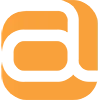1. Avoid Flash and frames
Flash content is completely unreadable to search engines, and frames (i.e. pages which are compiled of smaller areas - or 'frames' - to make up one web page) are not normally picked up by them either. It's OK to have smaller, embedded Flash elements within an HTML website, but an entirely Flash site will need a separate HTML version. Individual frame pages that do get picked up by search engines tend to be isolated from the rest of the site, which places them out of context.
2. Don't display wording as graphics only
Page content or wording displayed as graphics cannot be seen by search engines, so it will not be matched against the phrases people are searching for. Nowadays, style sheets allow a good range of text formatting so you don't have to completely sacrifice on style if you choose to use text. If graphics are essential, you should also use ALT tags to provide appropriate descriptive text in addition to the images.
3. Divide and conquer!
Pages dedicated to separate distinct topics or items get a stronger match on search engines than pages that try to cover everything. Try to divide sites up into separate pages (e.g. a different page for each subject, category, product, news item, etc).
4. Put keywords in link text
The text in a hyperlink helps tell search engines what the target page is about. When you link to a page try to use HTML text (as per 2 above) and put some relevant keywords in the link text. This is especially important for your navigation menus.
5. Place popular search terms in the page text
Try to make sure that visible text on each page contains the words and phrases that potential visitors are actually searching for. Do not duplicate phrases unnecessarily, and try to keep it all relevant to the specific subject of that page.
6. Good title tags
The tag is usually what the search engine will display as the link text in the search results - you have around 6 words to clearly state what the page is about.
7. Keywords and Description meta-tags
These meta-tags help provide further supporting content for search engines. The Keywords tag should be a comma-separated list of all the common words and phrases that visitors search for, which can include alternative spellings, misspellings and synonyms. The Description tag should be a brief sentence or two. If you find yourself having to use hundreds of keywords or long descriptions, then the page probably needs to be divided up as described in point 3.
8. Links in good, links out bad
Links to external sites usually hurt your site rankings, whereas incoming links to your site can help. Try to limit outgoing links and only do link exchanges with sites that rank well. We can advise you on how to assess link exchange partners more accurately.
9. Have a main domain
If the site is accessible via more than one domain name, these may compete with each other for rankings instead of supporting each other. Pick a single main domain to promote and have all others forwarded to it using a ‘301 Redirect'.
10. No splash pages
Swish animated company logos may do wonders for the boss' ego, but they create an additional link for search engines have to crawl past to reach the relevant content. This can reduce the ranking of the rest of the site pages by as much as 20%, which could mean the difference between being on the first page of results or not.
We hope you found these tips informative and useful, and that you consider them as part of your search engine marketing strategy.
